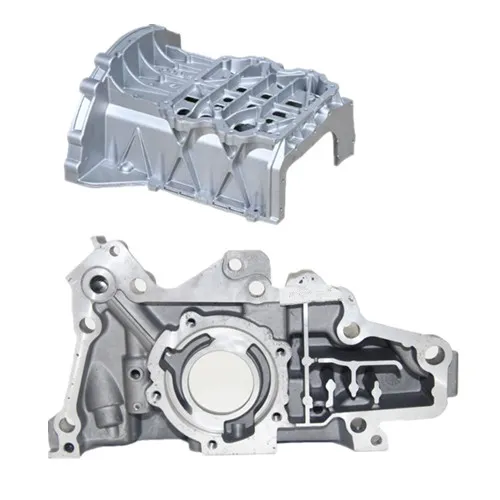Mobile:+86-311-808-126-83
Email:info@ydcastings.com
die casting
The Art and Science of Die Casting
Die casting is a manufacturing process that has gained significant recognition in various industries due to its efficiency and ability to produce complex shapes with high precision. This technique involves injecting molten metal into a mold, known as a die, which is precisely designed to shape the final product. The process is widely employed in the production of metal parts for automobiles, electronics, and appliances, among other applications.
Historical Background
The roots of die casting can be traced back to the 19th century when it was primarily used for reproducing detailed objects. The advent of the die-casting machine in 1838 marked a significant advancement, allowing manufacturers to produce items more quickly and in larger quantities. Over the years, technological innovations have refined the process, leading to the modern high-pressure die casting methods we see today.
The Process of Die Casting
The die casting process can be broadly divided into several steps
1. Mold Preparation The first step involves preparing the die, which is usually made from hardened steel to withstand high temperatures and pressures. The die is designed to create the shape of the final product and can include complex features such as threads or intricate surface details.
2. Melting the Metal A variety of non-ferrous metals, including aluminum, zinc, and magnesium, can be used in die casting. The metal is heated until it reaches a molten state, typically in a furnace specifically designed for this purpose.
3. Injection Once the metal is molten, it is injected into the die at high pressure using a piston. The pressure ensures that the molten metal fills all cavities of the mold and captures fine details before it starts to solidify.
4. Cooling After the metal has filled the mold, it begins to cool and solidify. The cooling time can vary based on the size and complexity of the part being produced. Once cooled, the die is opened, allowing the new casting to be removed.
5. Finishing The final step often involves additional processes, such as trimming, machining, or surface treatment, to achieve the desired finish and tolerances.
die casting

Advantages of Die Casting
The popularity of die casting can be attributed to its numerous advantages
- Precision and Accuracy Die casting produces parts with tight tolerances and intricate details, making it ideal for applications that require high precision.
- Speed The high-pressure injection process allows for rapid production cycles, meaning manufacturers can produce large quantities of parts in a short time.
- Complex Shapes Die casting can create complex geometries that might be difficult or impossible to achieve using other manufacturing methods, allowing for greater design flexibility.
- Material Efficiency The process minimizes waste material as the molten metal is poured into the mold, and excess material can often be recycled.
Applications of Die Casting
Die casting is widely used across several industries. In the automotive sector, it is employed to produce engine blocks, transmission cases, and other critical components that need to withstand significant stress. In the electronics industry, die-cast parts are used in housings, connectors, and other devices where reliability and conductivity are crucial. Similarly, consumer appliances benefit from die-cast components that enhance durability and performance.
Future Trends
Looking forward, die casting is poised for further advancements. Innovations in materials, such as the development of lighter yet stronger alloys, will expand its applicability. Additionally, automation and advancements in computer-aided design (CAD) may streamline the design and production processes, enhancing efficiency and precision even further.
In conclusion, die casting is a remarkable manufacturing technique that combines art with science. Its precision, efficiency, and versatility make it a preferred choice for producing high-quality metal parts across various industries. As technology continues to evolve, die casting will likely remain a cornerstone of modern manufacturing, shaping the future of production methods globally.
-
Why Should You Invest in Superior Pump Castings for Your Equipment?NewsJun.09,2025
-
Unlock Performance Potential with Stainless Impellers and Aluminum End CapsNewsJun.09,2025
-
Revolutionize Your Machinery with Superior Cast Iron and Aluminum ComponentsNewsJun.09,2025
-
Revolutionize Fluid Dynamics with Premium Pump ComponentsNewsJun.09,2025
-
Optimizing Industrial Systems with Essential Valve ComponentsNewsJun.09,2025
-
Elevate Grid Efficiency with High-Precision Power CastingsNewsJun.09,2025











